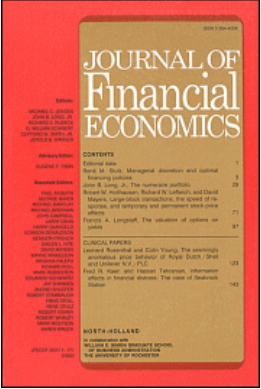为什么投资组合选择模型预测非弹性需求?
IF 10.4
1区 经济学
Q1 BUSINESS, FINANCE
引用次数: 0
摘要
经典的资产定价模型预测,优化投资者表现出极高的需求弹性,而经验估计明显低于三个数量级。为了调和这种差异,我们引入了一种新的将投资者需求弹性分解为两个关键组成部分的方法:“价格传递”(price pass-through)和“无跨越回报”(unspan returns),前者捕捉了价格变动如何预测回报,后者反映了股票缺乏完全替代品。在因子模型框架中,我们表明当模型包含“弱因子”时,未跨越的收益变得显著。经典模型通过假设非常低的无跨越回报和高价格传递,高估了需求弹性,这些假设与经验证据不一致。本文章由计算机程序翻译,如有差异,请以英文原文为准。
Why do portfolio choice models predict inelastic demand?
Classical asset pricing models predict that optimizing investors exhibit extremely high demand elasticities, while empirical estimates are significantly lower—by three orders of magnitude. To reconcile this disparity, we introduce a novel decomposition of investor demand elasticity into two key components: “price pass-through”, which captures how price movements forecast returns, and “unspanned returns”, reflecting a stock’s lack of perfect substitutes. In a factor model framework, we show that unspanned returns become significant when models include “weak factors”. Classical models overestimate demand elasticity by assuming both very low unspanned returns and high price pass-throughs, assumptions that are inconsistent with empirical evidence.
求助全文
通过发布文献求助,成功后即可免费获取论文全文。
去求助
来源期刊

Journal of Financial Economics
Multiple-
CiteScore
15.80
自引率
4.50%
发文量
192
审稿时长
37 days
期刊介绍:
The Journal of Financial Economics provides a specialized forum for the publication of research in the area of financial economics and the theory of the firm, placing primary emphasis on the highest quality analytical, empirical, and clinical contributions in the following major areas: capital markets, financial institutions, corporate finance, corporate governance, and the economics of organizations.
 求助内容:
求助内容: 应助结果提醒方式:
应助结果提醒方式:


